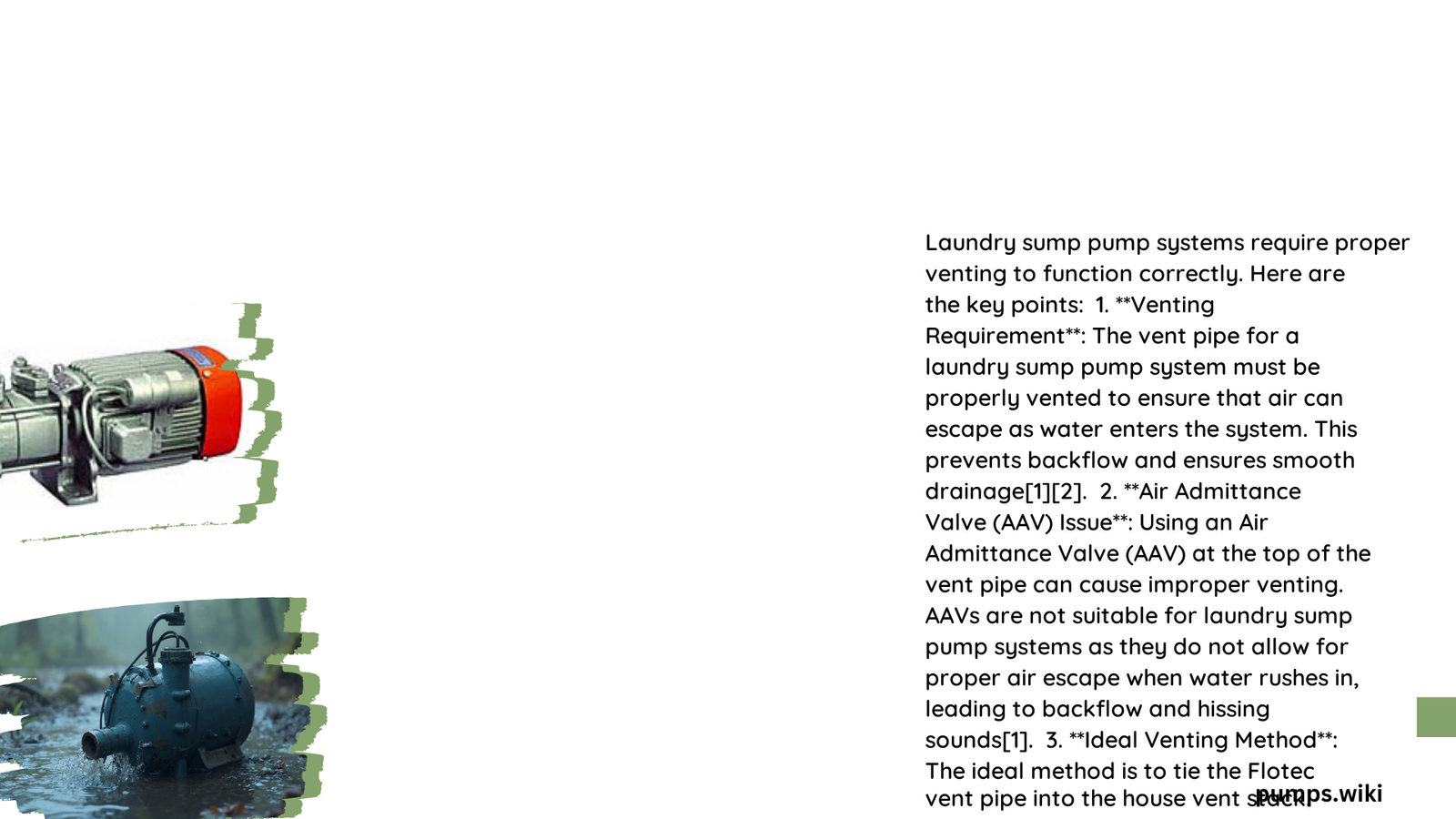Laundry sump pump systems require proper venting to ensure efficient drainage, prevent sewer gas infiltration, and maintain optimal performance. Inadequate ventilation can lead to significant plumbing issues, reduced pump efficiency, and potential health hazards. Homeowners must understand the critical role of venting in maintaining a functional and safe laundry drainage system, addressing potential challenges through strategic installation and compliance with local plumbing codes.
Why Do Laundry Sump Pump Systems Require Venting?
What Happens Without Proper Ventilation?
Proper ventilation is not just a recommendation but a critical requirement for laundry sump pump systems. Without adequate venting, homeowners may experience several significant problems:
- Drainage Inefficiency: Blocked air circulation can cause slow drainage and water backup
- Sewer Gas Infiltration: Lack of venting allows harmful gases to enter living spaces
- Pump Mechanical Stress: Improper air pressure can cause frequent pump cycling and premature wear
How Do Venting Systems Work?
Venting systems for laundry sump pumps operate through a simple yet crucial mechanism:
| Venting Component | Primary Function | Typical Specification |
|---|---|---|
| Vent Pipe | Allow Air Circulation | 2-inch diameter |
| External Termination | Prevent Gas Backflow | 36 inches above ground level |
| Air Admittance Valve | Pressure Equalization | Code-compliant design |
What Are the Key Venting Requirements?
Vent Pipe Specifications
- Material: PVC, ABS, or cast iron
- Minimum Size: 2-inch diameter
- External Extension: Must extend outside home
- Height Requirement: 36 inches above flood level
Where Should Vent Pipes Be Installed?
Ideal vent pipe locations include:
1. Directly above the sump pump drainage point
2. Through exterior wall or roof
3. Clear of windows and other structural obstacles
4. Positioned to prevent water accumulation
What Risks Emerge from Improper Venting?
Potential consequences of inadequate venting include:
– Persistent sewer odors
– Potential water trap siphoning
– Increased risk of bacterial growth
– Reduced pump operational efficiency
– Potential code violation penalties
How Much Does Professional Venting Cost?
Cost considerations for laundry sump pump venting:
| Service Type | Estimated Cost Range |
|---|---|
| Materials | $50 – $200 |
| Professional Installation | $300 – $1,000 |
| Permit Fees | $50 – $250 |
Can Homeowners Complete Venting Themselves?
While some experienced DIY enthusiasts might tackle venting, professional installation is recommended due to:
– Complex local building code requirements
– Precise measurement and angle calculations
– Potential for costly mistakes
– Need for specialized tools
Expert Recommendations

Professionals strongly advise:
– Always consult local plumbing codes
– Use high-quality, durable vent materials
– Ensure proper slope and external termination
– Schedule periodic system inspections
Final Insights
Laundry sump pump systems absolutely need venting to function correctly. Proper installation protects your home’s plumbing infrastructure, prevents health risks, and ensures long-term drainage efficiency.
